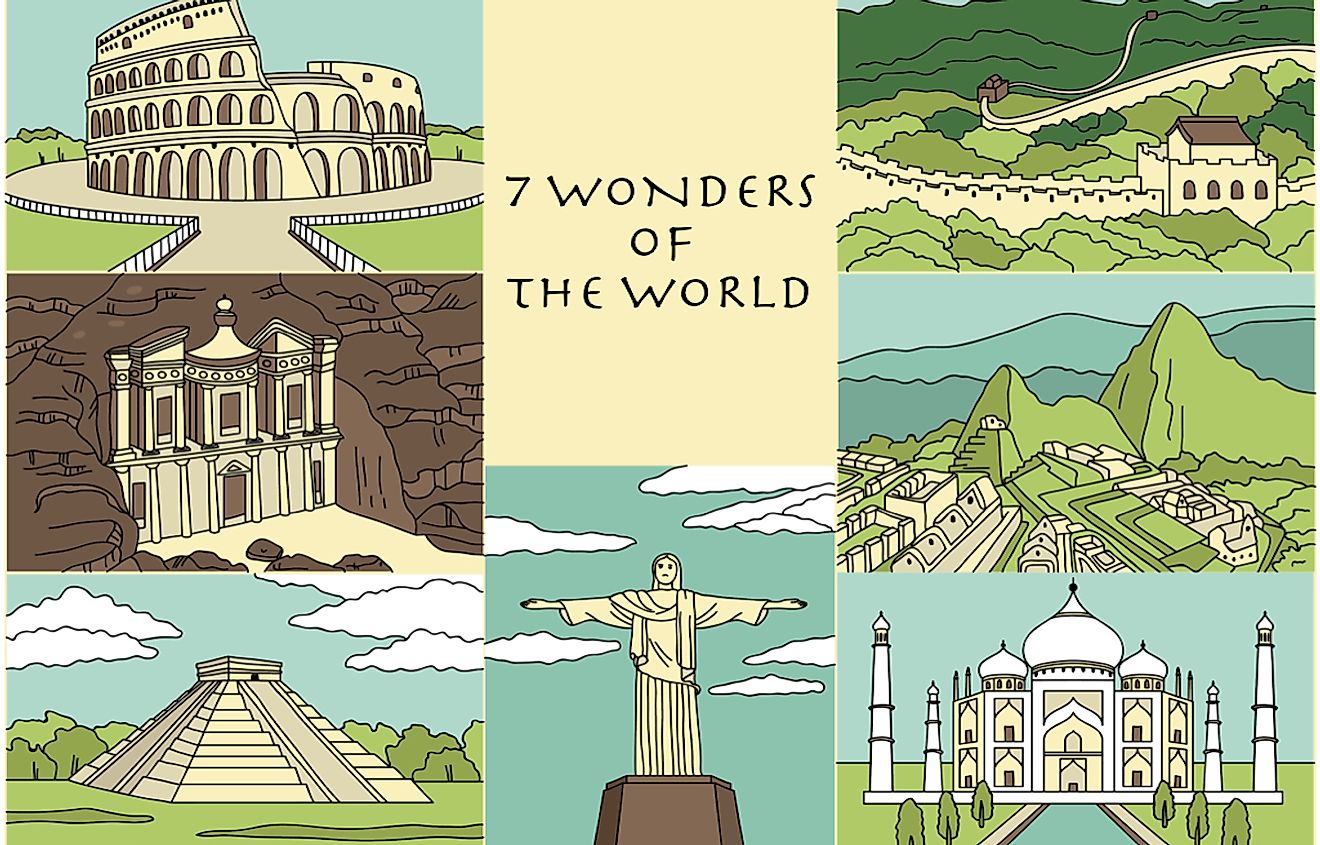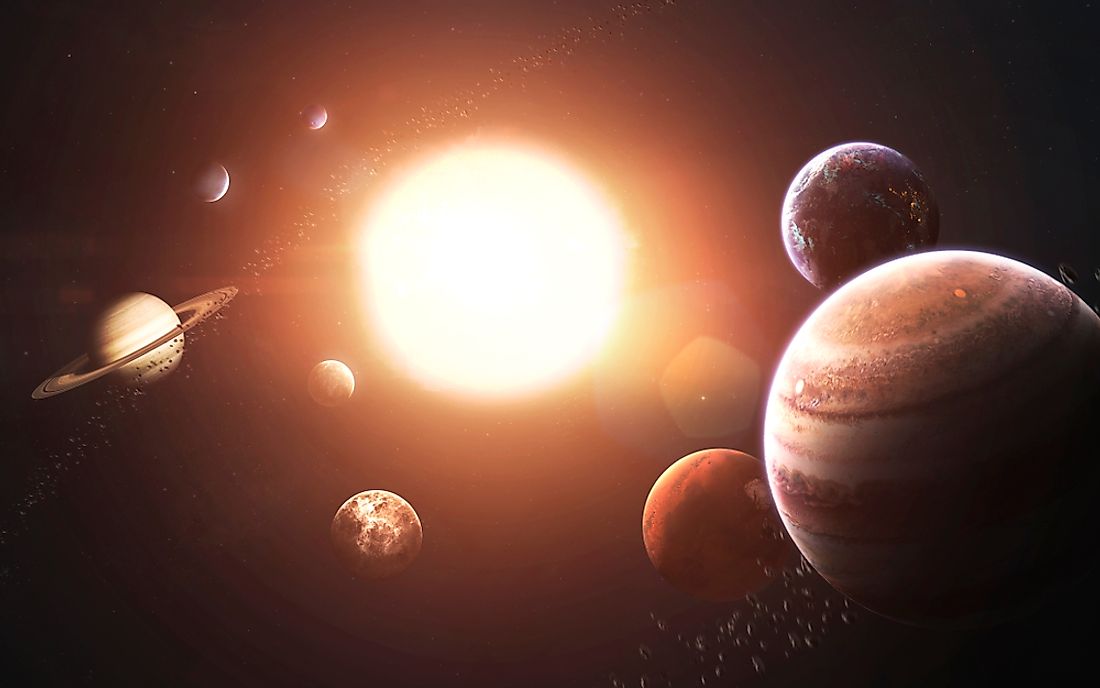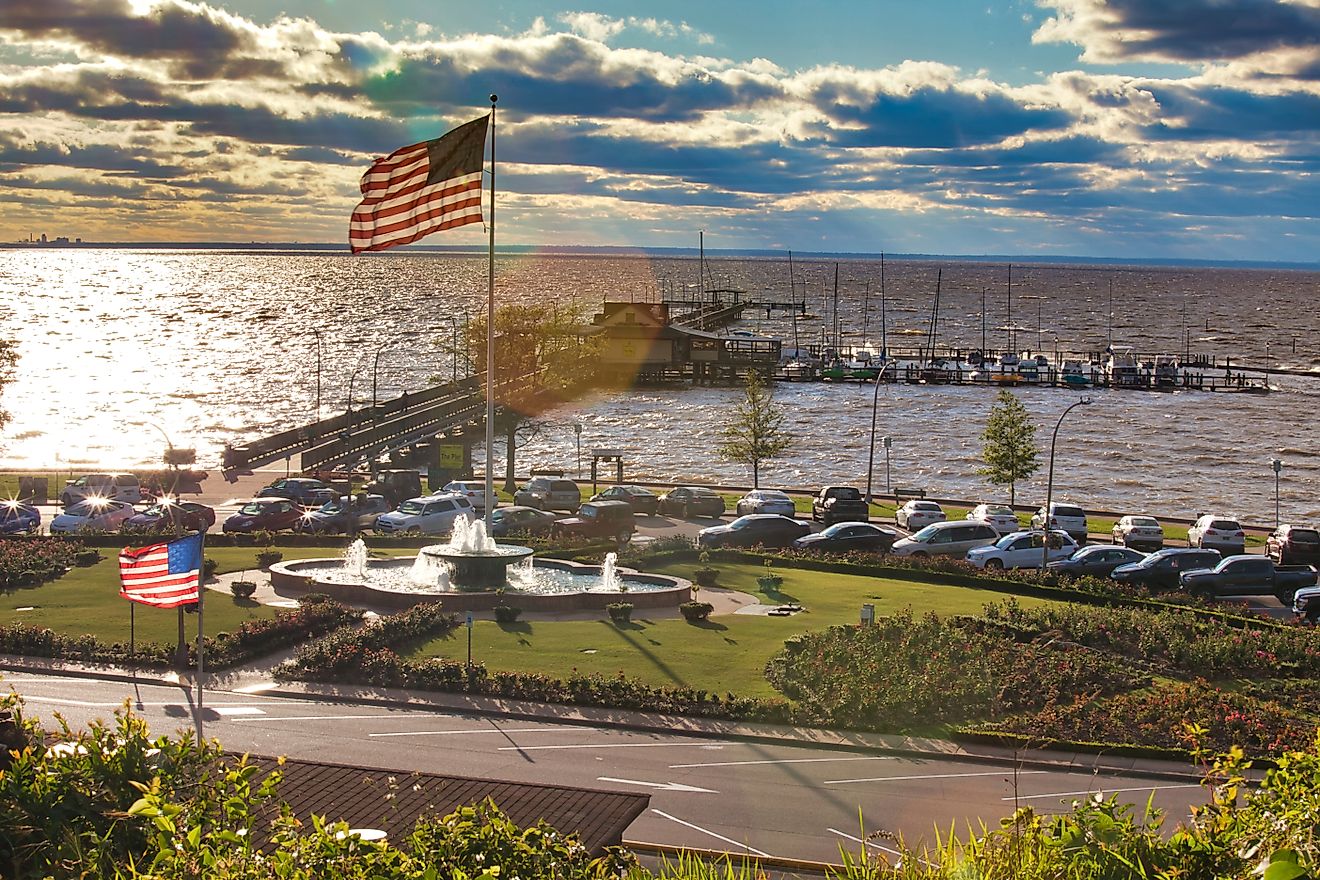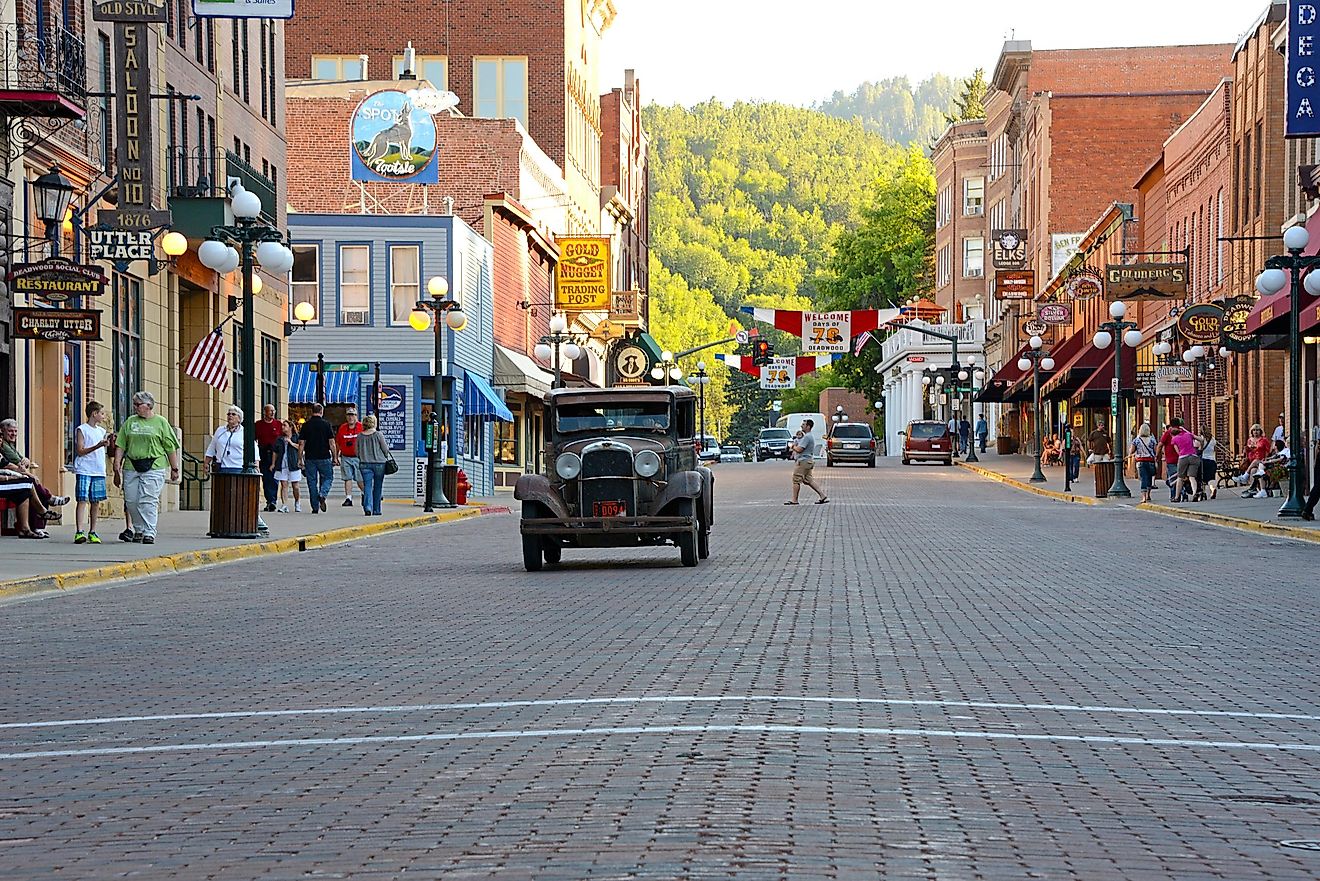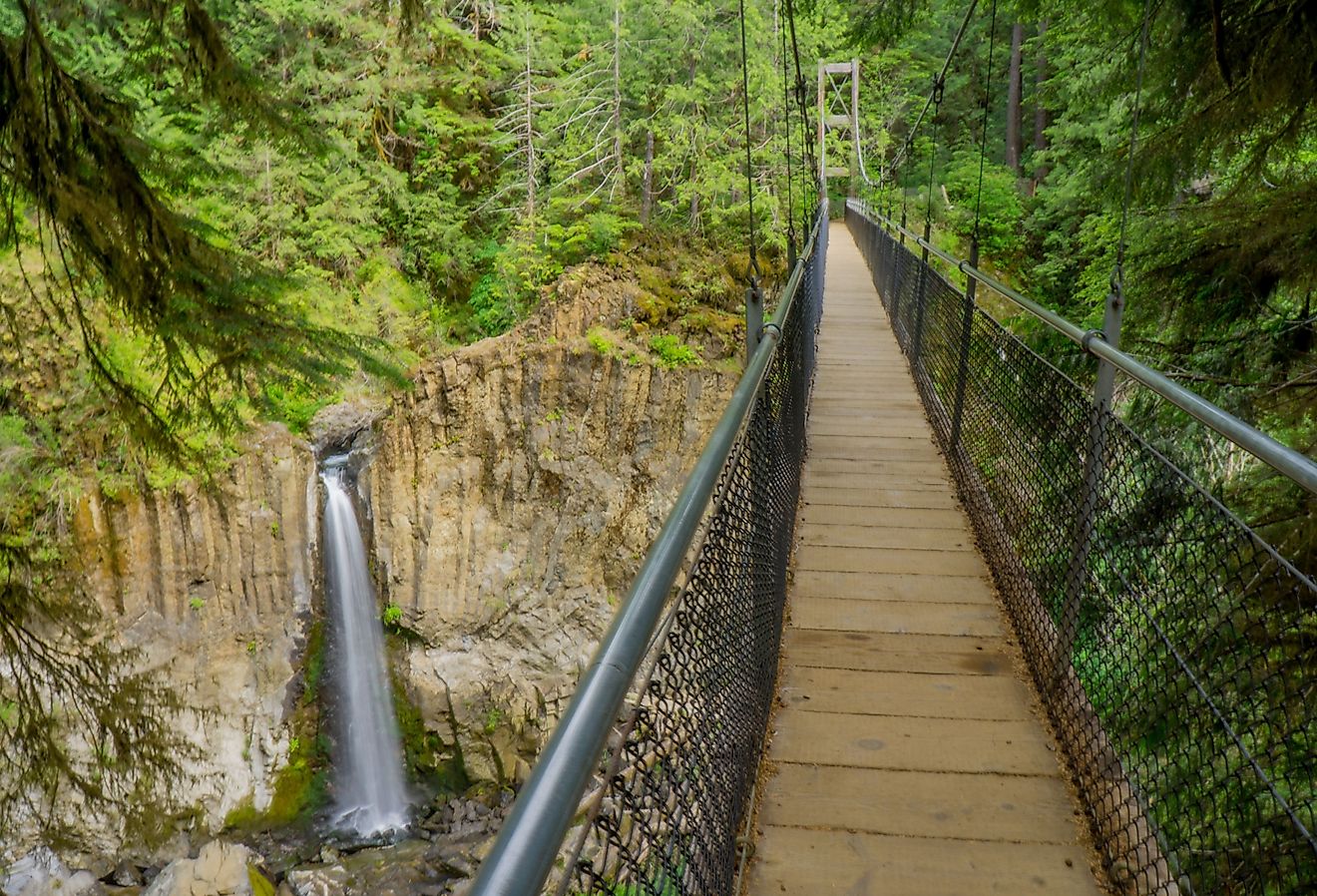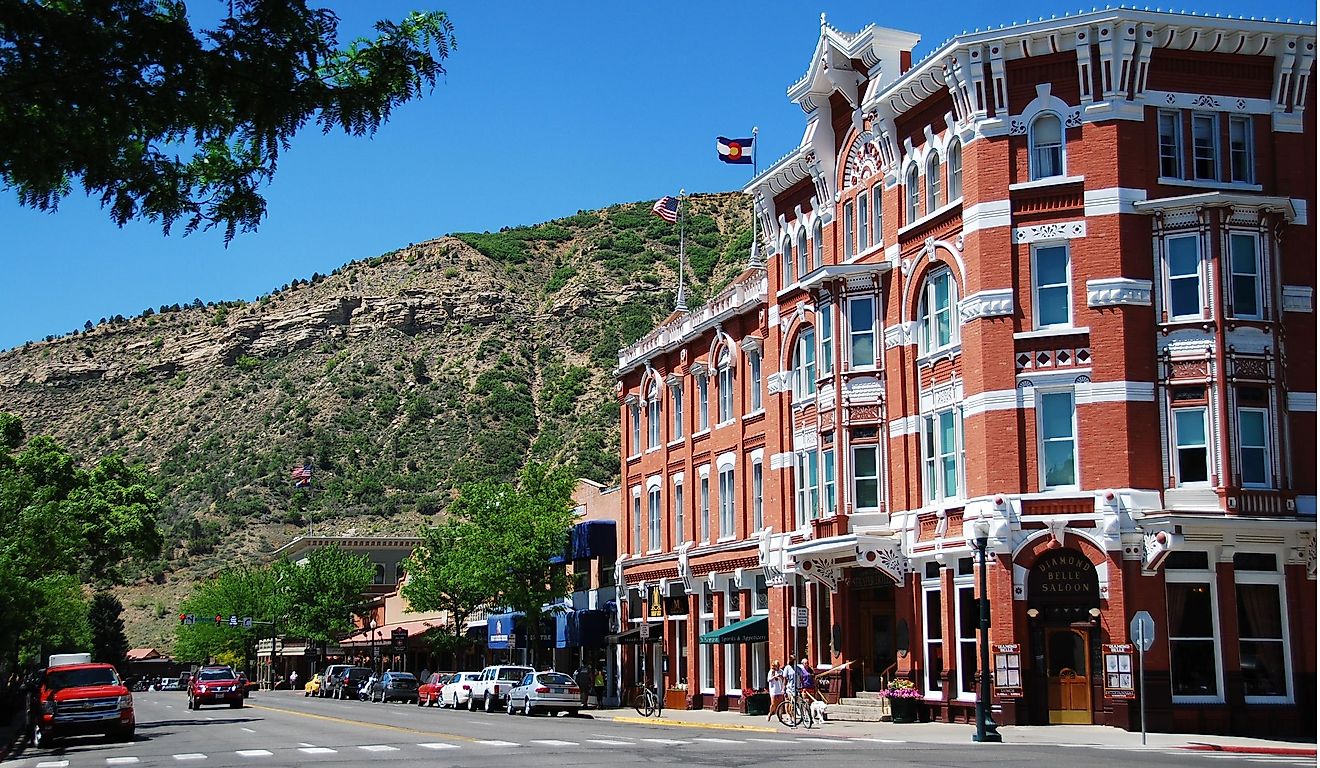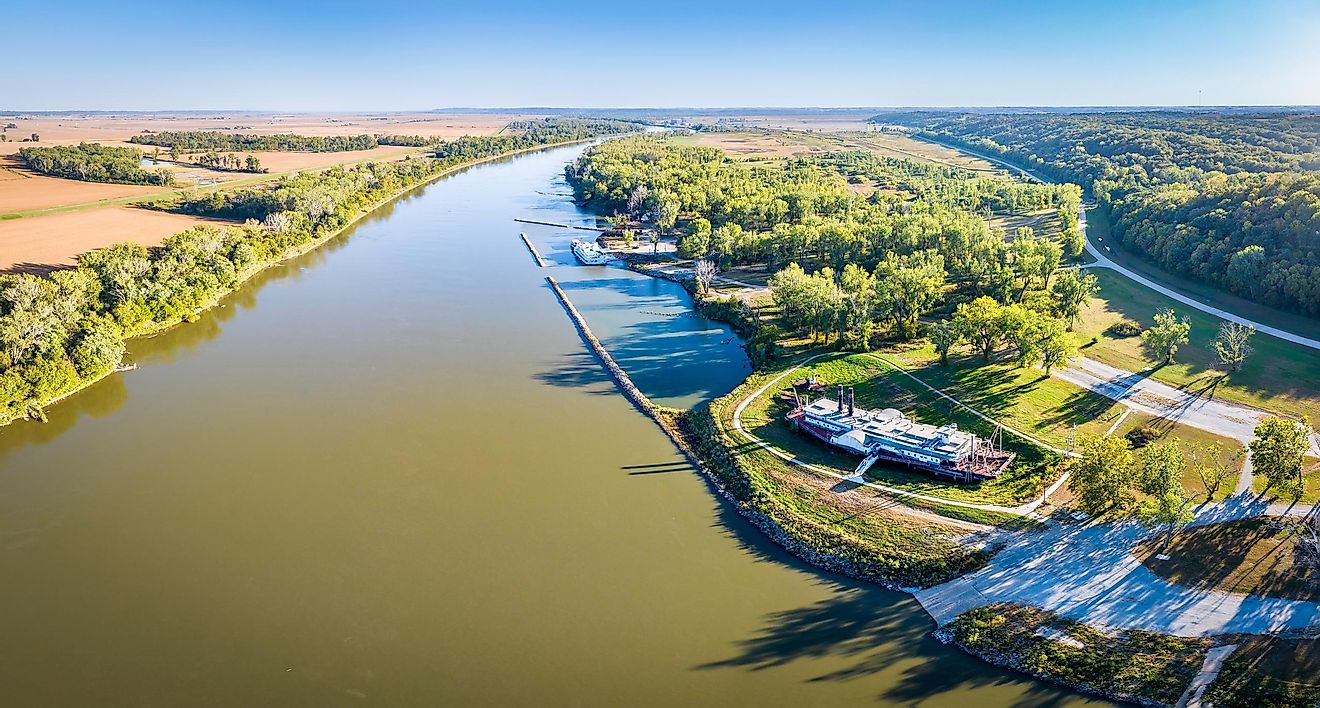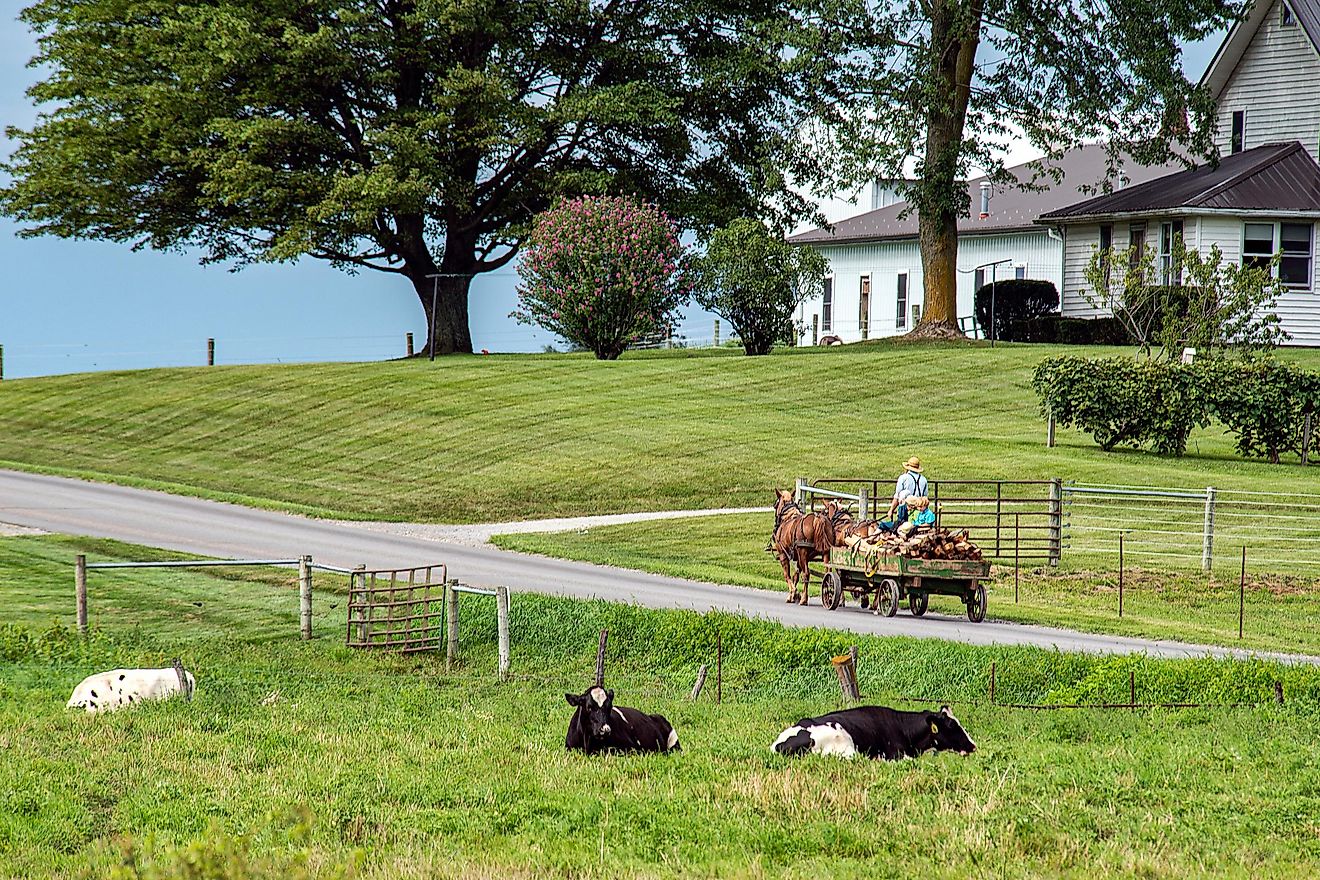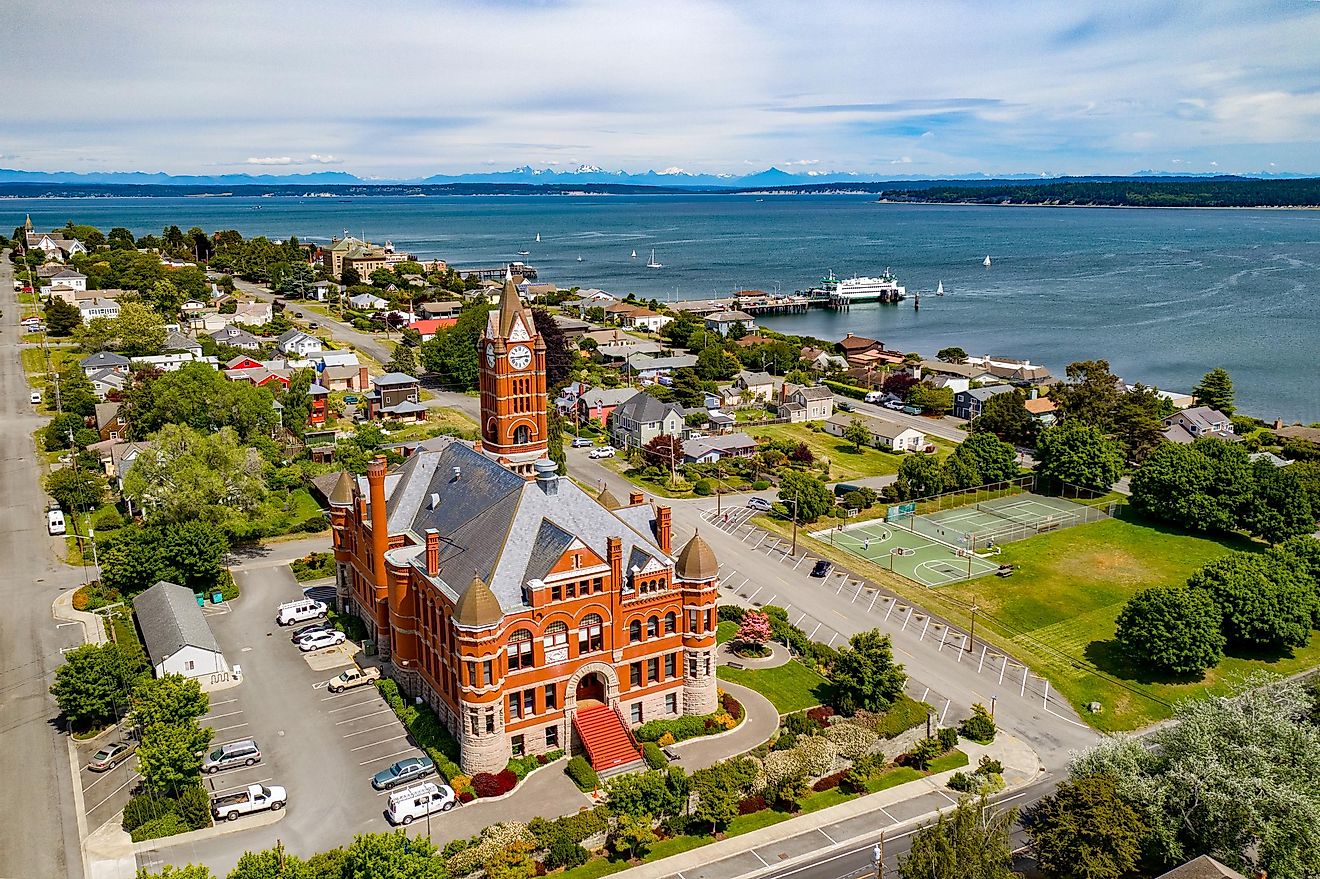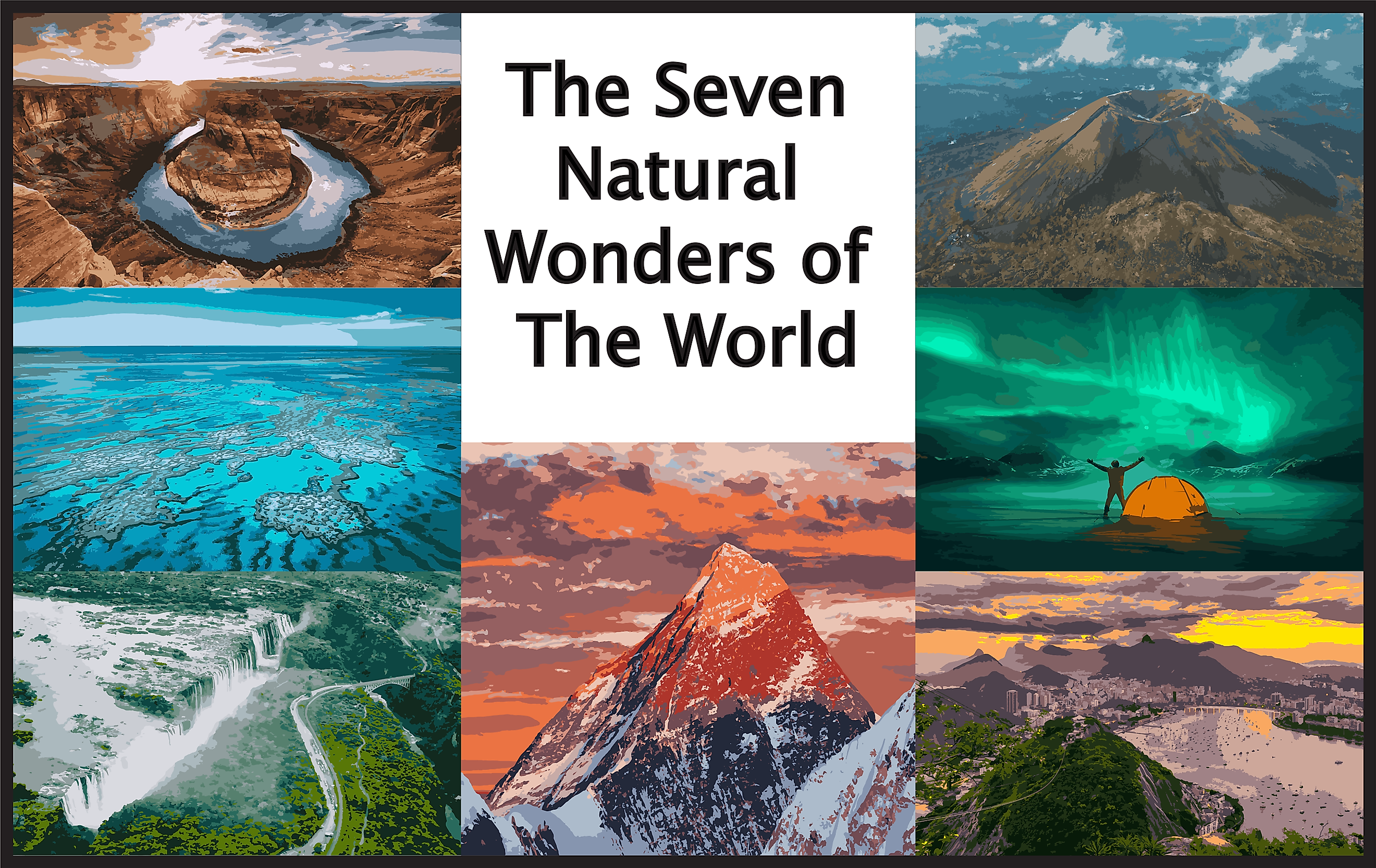
The 7 Natural Wonders Of The World
Beyond the horizon of our concrete cityscapes, Mother Nature has safeguarded incredible treasures that have survived countless eons. The organization 'Seven Natural Wonders' chose these seven exotic places to represent Earth's beauty. Some selections contain peaks that tear through the clouds, and some harbor multicolored legions of aquatic life. For those who are regularly in awe of our remarkable planet, this collection is for you.
The 7 Natural Wonders Of The World
The official list of the 7 Natural Wonders was compiled by CNN, the broadcasting network in collaboration with the Seven Natural Wonders organization.
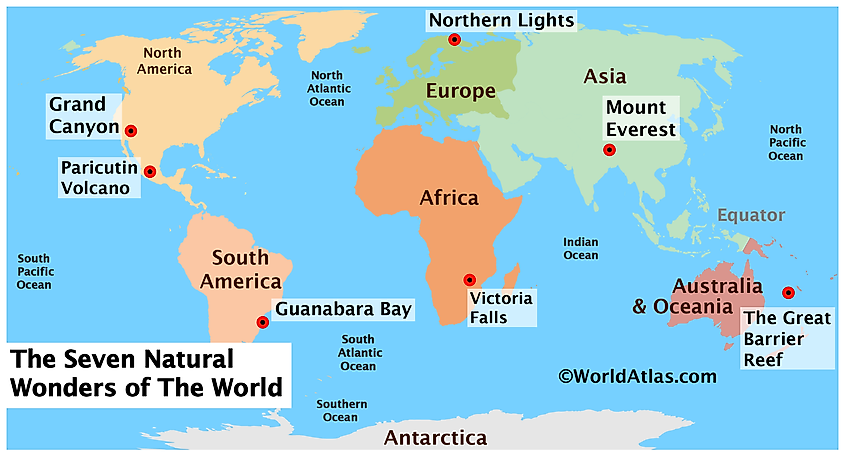
| Table of Contents |
|---|
| Mount Everest |
| Paricutin Volcano |
| The Grand Canyon |
| Victoria Falls |
| The Harbor Of Rio de Janeiro |
| Great Barrier Reef |
| Northern Lights |
Mount Everest

Mount Everest, the highest peak on Earth at 8,848 meters (29,029 feet), is known as a formidable challenge for climbers. It is part of the Himalayan mountain range and straddles the China(Tibetan)-Nepal border, with the summit marking the official boundary. Sixty million years went into forming this unmistakable wonder, and thus its geological composition is mainly metamorphic and sedimentary rocks. Known in Nepal as Sagarmatha and in Tibet as Chomolungma, translating to "Mother Goddess of the World," Everest's English name comes from George Everest, a notable surveyor of India.
The mountain's harsh and unpredictable weather, often reaching below -60°C (-76°F), and its environmental significance, being a source for major Asian rivers, make it a focal point for ecological study. It hosts one-of-a-kind wildlife, including the snow leopard and Himalayan tahr, both of which adapted to extreme altitudes. Local Sherpa communities rely heavily on mountaineering tourism, but there is currently an ongoing debate about the ethics of endangering these guides. However, issues like melting glaciers and waste from expeditions have raised environmental concerns, emphasizing the need for sustainable practices. While Everest's height is surpassed by Hawaii's Mauna Kea when considering its underwater portion, Everest's peak is the tallest above sea level. One way or another, Everest raises the bar on what it means to be a natural wonder.
Paricutin Volcano
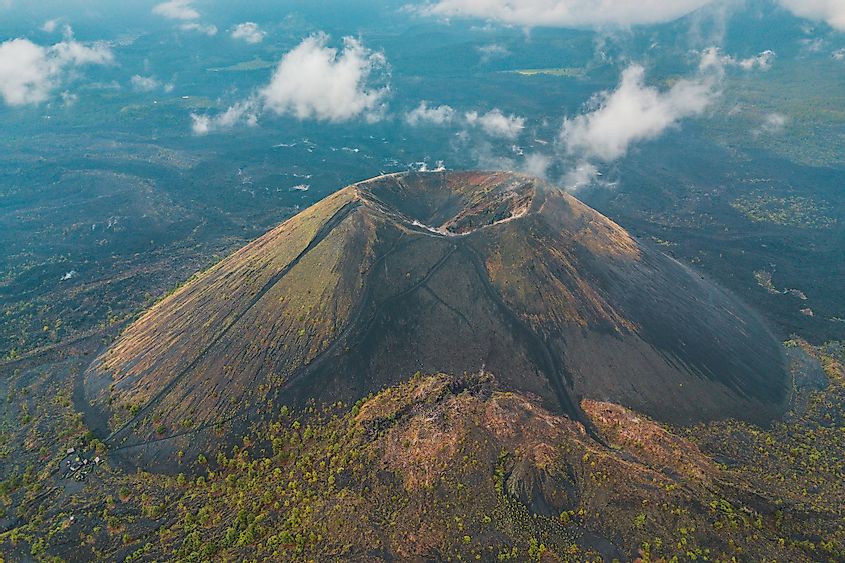
The Parícutin Volcano in Michoacán, Mexico, a cinder cone volcano, emerged in 1943 in a farmer's field, marking a remarkable event in geological history. This volcano, which is the youngest in the Northern Hemisphere, grew rapidly to a height of 424 meters (1,391 feet) over a period of nine years. During its active phase, Parícutin released extensive lava flows and ash, covering approximately 25 square kilometers (9.7 square miles) and necessitating the evacuation of neighboring villages. Notably, the village of San Juan Parangaricutiro was significantly affected, with its church steeple now protruding from solidified lava. In its current dormant state, Parícutin presents a fascinating landscape of hardened lava and ash, drawing both tourists and geologists. Visitors have the opportunity to climb the volcanic peak and explore the area, which includes the striking sight of the encased ruins of the San Juan Parangaricutiro Church.
The Grand Canyon
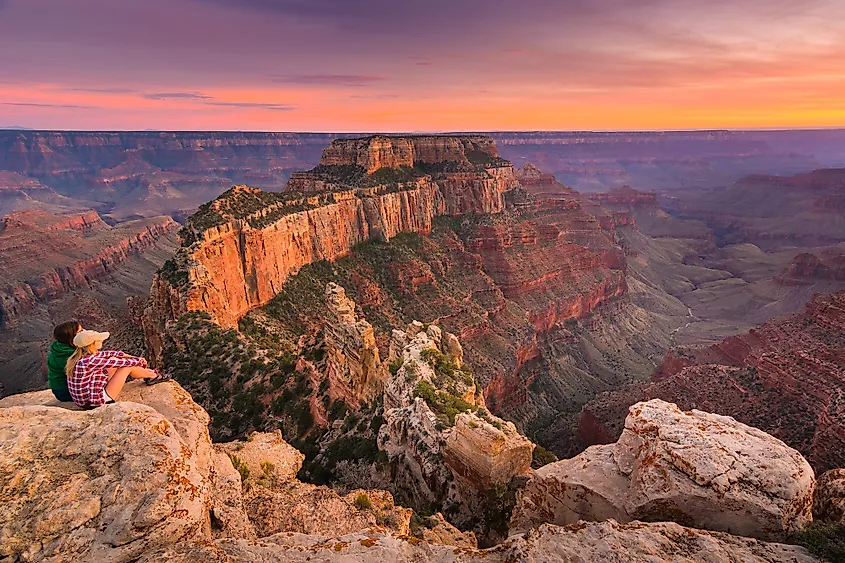
The Grand Canyon, located in Arizona, United States, is a geological formation with extensive and detailed rock layers, revealing 1.2 billion years of Earth's history, including marine, nearshore, and desert environments. Formed over billions of years by the erosion of the Colorado River, the canyon spans 447 kilometers (277 miles) in length, reaches widths of up to 29 kilometers (18 miles), and depths exceeding 29 kilometers (18 miles). Its sheer size and depth are not only awe-inspiring but also of significant scientific interest. The canyon's deep rust-red colors and sediment layers are visible across its cliff walls, which from the perspective of visitors, travel endlessly into the horizon. The Grand Canyon is home to many species of wildlife, including 1,500 plant species, 355 bird species, 89 mammals, 47 reptiles, 9 amphibians, and 17 fish species, supported by varying climates and ecosystems due to its elevation differences. Popular activities at the canyon include gazing at its grandeur, hiking along its rims, and rafting in the river below, offering visitors a range of ways to experience its magnitude and history. For those that have visited the Grand Canyon, it is clear why any road trip across the United States must include a stop by this natural marvel.
Victoria Falls
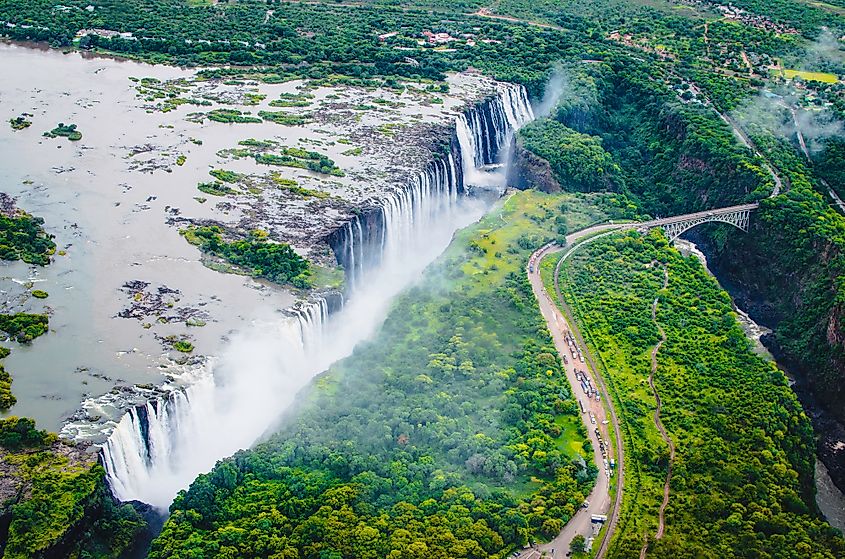
Victoria Falls, straddling the border between Zambia and Zimbabwe, is celebrated as one of the seven natural wonders of the world. This distinction comes from its status as the world's largest waterfall, a title derived from its impressive dimensions rather than its height or width alone. The falls stretch 1,708 meters (5,604 ft) wide and plunge 108 meters (354 ft), forming the largest continuous sheet of falling water on the planet. During the wet season, this spectacle is at its peak, with about 500 million liters of water cascading over the edge every minute.
The falls owe their existence to the Zambezi River and the erosion of basalt bedrock, which has also shaped the Batoka Gorge downstream. Known locally as Mosi-oa-Tunya, or "The Smoke That Thunders," Victoria Falls captivates visitors with its astonishing water flow, averaging 1,088 cubic meters per second. Tourists from around the globe flock to this site for a range of experiences: viewing the falls from multiple vantage points, swimming close to the fall's edge in the low season, and even bungee jumping off the Victoria Falls Bridge.
The Harbor Of Rio de Janeiro
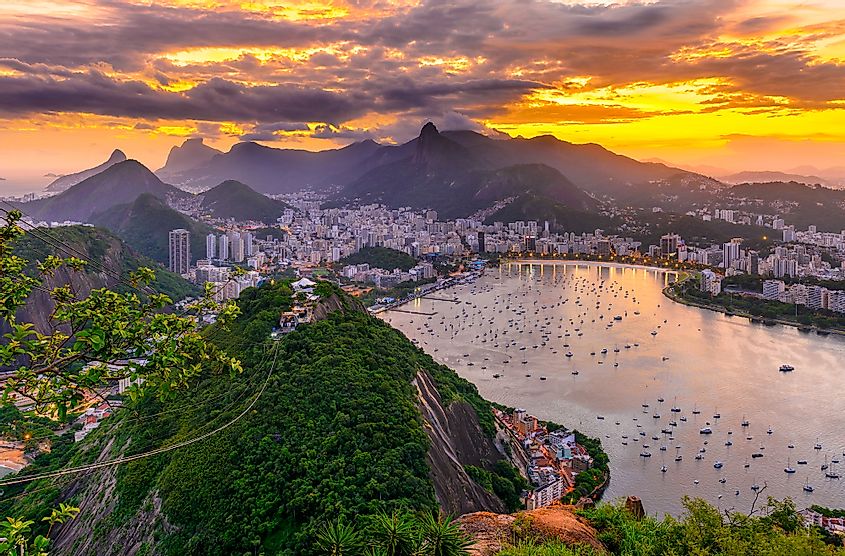
The Harbor of Rio de Janeiro, also known as Guanabara Bay, located in the southeast of Brazil, is renowned as the world's largest natural bay by volume— this distinction contributes to its status as one of the seven Natural Wonders of the world. The bay, covering 412 square kilometers with depths of up to 17 meters (56 feet), is flanked by notable landmarks such as Sugarloaf Mountain and Morro Cara de Cão. Its entrance, framed by granite rock formations and monoliths, creates an impressive visual landscape. Despite the harbor's evolution into a major economic and human activity hub, with elements like the city of Rio and popular beaches such as Copacabana, the natural beauty of the bay endures. Many have been intrigued by how this particular blend of city life and nature merge into a harmonious and visually striking area. Last, the bay's strategic importance in Brazil is cemented in its central economic and cultural location.
Great Barrier Reef

The Great Barrier Reef, located off Queensland, Australia in the Coral Sea, is the world's largest coral reef system, extending over 2,300 kilometers with 2,900 individual reefs and 900 islands across 344,400 square kilometers of ocean. Renowned for its biological diversity, the reef is home to more than 1,500 fish species, 411 types of hard coral, and a third of the world's soft corals. Additionally, it supports 134 shark and ray species, six of the seven threatened marine turtle species, over 30 marine mammal species, and serves as a critical breeding ground for humpback whales and a sanctuary for endangered species like the dugong and large green turtle. Despite challenges from tourism and climate change, the reef remains a significant global natural wonder, attracting visitors worldwide for diving and snorkeling amidst its vibrant marine life. Conservation efforts are underway to protect this delicate habitat and preserve its remarkable array of life and colors.
Northern Lights

The Northern Lights, or Aurora Borealis, represent an extraordinary natural phenomenon, predominantly visible in polar regions, including the Arctic Circle. These lights manifest as a dynamic display of colors, primarily greens, blues, and purples, produced by the interaction of solar wind particles and atmospheric gases. The spectacle varies in intensity and form, influenced by solar activity and Earth's magnetic field, often appearing most vivid during dark winter nights and near equinoxes. Renowned for their breathtaking display of moving colors, these lights are the result of electrically charged particles from solar flares interacting with Earth's gaseous atmosphere, creating a dynamic, awe-inspiring visual effect. The phenomenon is a remarkable example of natural events like sun flares transforming into a mesmerizing earthly spectacle. Prime viewing spots are located away from city lights, with the best sightings in places like Norway, Sweden, Finland, Iceland, Greenland, Canada, and the U.S. state of Alaska, where the clarity and frequency of the aurora are enhanced by minimal light pollution. With a bit of luck, patience, and a warm jacket, you too might one day witness this breathtaking event.
Final Thoughts
Crashing waterfalls, soaring heights, and atmospheric phenomena — our home planet knows how to keep a crowd's attention. These features are not simply geographic; they often interweave with the miracle of biological life found nowhere else in the Universe. Victoria Falls, for instance, is twice the experience thanks to greenery and exotic creatures flying and swimming through its misty waters. As far as natural wonders go, auroral activity may be present on other planets that have magnetic fields and an atmosphere. Still, those barren rocks lack observers like you and me, and humanity is yet another wonder of our world.

